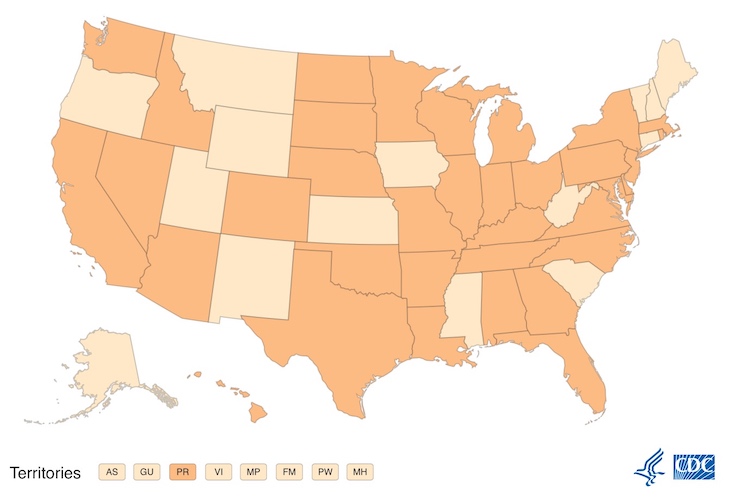Acute pediatric hepatitis cases in the United States are increasing, and now affect children in 36 states, according to the CDC. The number of persons under investigation (PUI) is now 180. PUI does not meant the case is confirmed. The states and the CDC are “looking broadly” at hepatitis cases of unknown origin in children under the age of 10 since October 2021. This number may change as the medical charts are reviewed. These numbers will be updated weekly.

The states and territories with possible cases include Alabama, Arizona, Arkansas, California, Colorado, Delaware, Florida, Georgia, Hawaii, Idaho, Illinois, Indiana, Kentucky, Louisiana, Maryland, Massachusetts, Michigan, Minnesota, Missouri, Nebraska, Nevada, New Jersey, New York, North Carolina, North Dakota, Ohio, Oklahoma, Pennsylvania, Puerto Rico, Rhode Island, South Dakota, Tennessee, Texas, Virginia, Washington, and Wisconsin. This started when nine children in Alabama were diagnosed with hepatitis.
So far, the government has not named a specific cause for these illnesses, although some of the children have tested positive for advenovirus 41. However, that virus does not typically cause any serious complications in otherwise healthy children. Others have speculated that COVID-19 may be associated with these illnesses.
Symptoms of hepatitis, whether caused by a virus, chemicals, or some medications, include pain in the upper right quadrant of the abdomen, clay-colored stools, dark urine, low grade fever, loss of appetite, intense itching, fatigue, sudden nausea and vomiting, and jaundice, which is yellowing of the skin and eyes. Doctors are asking parents to watch for these symptoms after their children experience nausea and vomiting, and to see a doctor as soon as possible.




